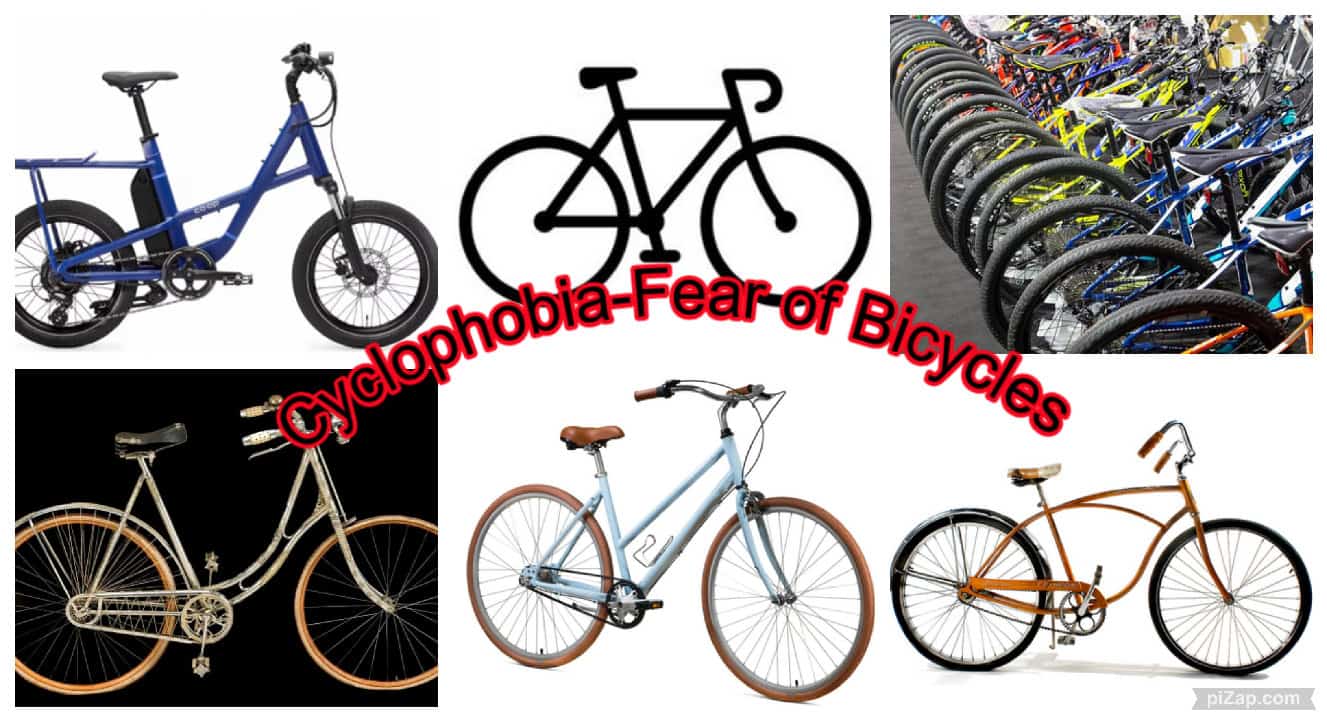Share This Article
Cycling Out of Cyclophobia
Life is like riding a bicycle; to stay balanced, you have to keep moving. – Unknown
Riding a bike is something that most children learn at an early age. From trikes to training wheels, then slowly transitioning to balance bikes, bike riding is part of childhood.
But what if the thought of riding or seeing a bike causes you to become sick to your stomach? You can’t imagine going around the park on a bike. The mere mention of the word “bicycle” causes your palms to sweat and your forehead to bead with perspiration.
If this sounds like you, then you may have cyclophobia. Cyclophobia is the irrational fear of bicycles and is often called bicyclophobia as well. People who have this condition feel anxious and wary of anything bicycle-related for fear of getting killed or injured. It is a specific phobia that can cause you to miss out on the simple joys of life.

Symptoms of Cyclophobia
The symptoms of bike phobia vary from one individual to the next. The triggers and severity are also unique for each person. For instance, one may start feeling anxious at the mere mention of the word bicycle. On the other hand, some can tolerate being up close to a bike but may have a panic attack at the thought of riding it.
Most of the time, you’ll experience one or several of these symptoms if you have cyclophobia.
Physical Symptoms
- Dry mouth
- Irregular heartbeat
- Nausea
- Shortness of breath
- Sweating
- Upset stomach
- Weak tone of voice
Mental/Emotional Symptoms
- Anxiety
- Constant worry
- Irrationality
- Mood swings
- Morbid thoughts
- Panic attacks
Causes of Cyclophobia
Like most phobias, the specific cause of the fear of bicycles is unknown. However, certain factors may contribute to the development of this phobia.
Traumatic Experience
As a child, you may have experienced falling off your bike or getting hit by a bike. It’s also possible that you witnessed someone having a bike-related accident, so you learned to associate bicycles with negative experiences.
Learned Response
If you grew up in a household where bikes were perceived negatively, you might have made the fear of others your own. Even if you don’t have any direct negative experiences with bikes, you might have become cautious and fearful of them because of your environment.
Genetics
This phobia could be inherited from your family. Note that the fear doesn’t necessarily have to be cyclophobia. It can also be other phobias, like trokhophobia, the fear of wheels, and dystychiphobia, the fear of all forms of physical accidents.
Additionally, if any of your family members were diagnosed with anxiety, depression, or schizophrenia, it could cause you to develop irrational fears.
Treatment of Cyclophobia
Managing and overcoming cyclophobia is a journey. The good news is that there are plenty of effective interventions you can try.
Self-Help Treatment
The most accessible and, by far, the most economical treatment is adapting your activities at home. By changing your daily routine, you can start experiencing and viewing bicycles differently.
1. Start a Journal
Write down your thoughts and feelings before, during, and after your cyclophobia attacks. Note your triggers so you can better understand your thought processes. You can react better the next time it happens because you’ve learned to anticipate your usual responses.
2. Learn Breathing Exercises
Inhale all the positive thoughts and exhale the negative ones from your mind and body, including the fear of bicycles. Consider yoga as it can help you channel your fears out while calming your mind and body.
3. Join Support Groups
Today, there are plenty of online support groups and communities you can join. Sharing experiences with others who have phobias can make you feel less alone in your journey to recovery.
4. Talk to Your Family and Friends
A strong support system comprised of people you trust can make a huge difference in your recovery. Letting them in on your fears can help them understand you better so you can be yourself without judgment or shame.
5. Start Your Day With Self-Affirmations
Look beyond your fear of bicycles and remind yourself how strong and beautiful you are. Each morning, begin the day with self-affirmations like:
- I can move past this.
- I am strong and capable.
- I will take things one day at a time.
- My fear doesn’t define me.
- I survived my cyclophobia before. I will survive it now.
Professional Help
Enlisting the help of a medical professional, psychologist, therapist, or psychiatrist is another option. There are many available structured treatment plans that could be helpful.
1. Counseling
Talk openly with your mental health professional about your fear, how it impacts your life, and the changes you want to experience.
2. Psychotherapy
Together, you and your mental health professional will identify the root cause of your cyclophobia and then work towards changing your outlook.
3. Desensitization
Desensitization entails gradual exposure to the object of your fear. For instance, you might touch a bike or even ride one in a controlled, safe environment.
Living with Cyclophobia
Overcoming cyclophobia is hard but doable. Acknowledging your fear and deciding to move past it is the first step to living normally again.
It’s not an easy task and there are plenty of setbacks, but things can get better with a solid support system and the willingness to accept help from others. Be kind to yourself, be patient, and celebrate your wins, even small ones.
Conclusion
Cyclophobia is a less common fear but the fear is real and the anxiety that comes with it can be crippling. With the right mindset, a solid support system, and the right treatment plan, you can learn to cope this fear and eventually overcome it.
Sources:
https://optimistminds.com/cyclophobia/
https://drlogy.com/medical-dictionary/cyclophobia



